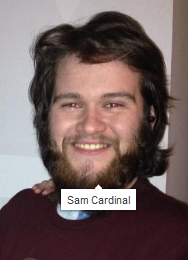Celebration of Scholars
Saint Thomas Aquinas and the Divinity of Ovid's Gods and Heros
 Name:
Samuel Cardinal
Name:
Samuel Cardinal
Major: English
Hometown: Chicago
Faculty Sponsor:
Other Sponsors: Annette Duncan
Type of research: Course project
Abstract
Through the use of Saint Thomas Aquinas’ “Five ways to prove the Existence of God” one is able to create a sort of Divinity test. Using the five ways as guidelines for the Divine one can apply these ways to Ovid’s portrayal of the Roman pantheon in his work “Metamorphoses”.
The goal of my work was to first look at how Saint Thomas wrote his Five Ways. I found that through his use of language Aquinas is able to think past the Judeo-Christian God and instead shifts his focus to this God of unimaginable perfection that must have started time. Next my work used the portrayal of the Roman Gods in Ovid’s “Metamorphoses” as the subjects of study to scrutinize using Saint Thomas. My paper uses this lens to look at three gods and two demi-Gods, but provides a formula that can be used throughout.
This perspective is unique because it is taking a Sainted man’s theological writings for the Church and using the wording to justify the possible existence of other Gods. What is also important about my work is looking into what Aquinas thought of the “True God” compared to other Divinities
Submit date: March 15, 2015, 9:33 p.m.
